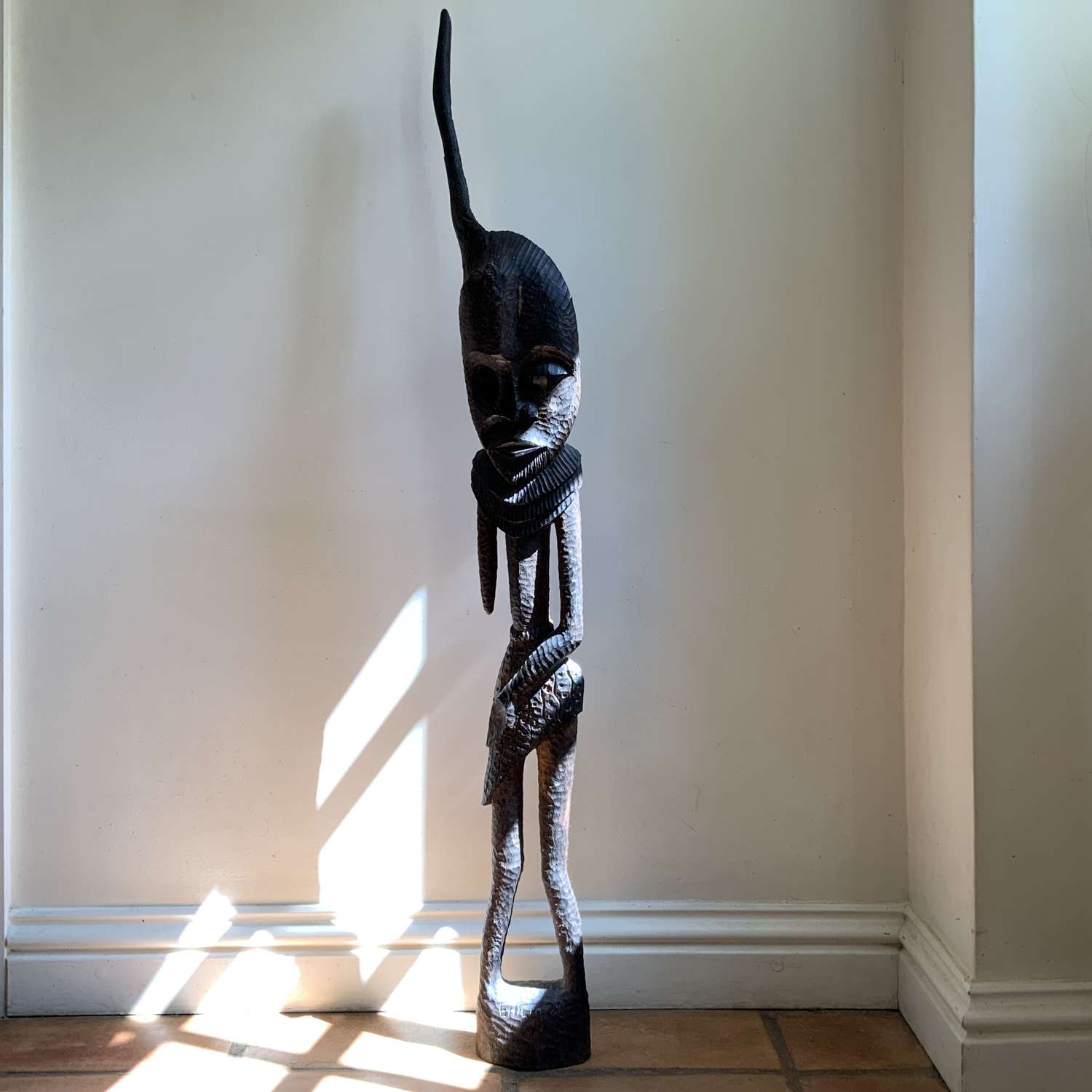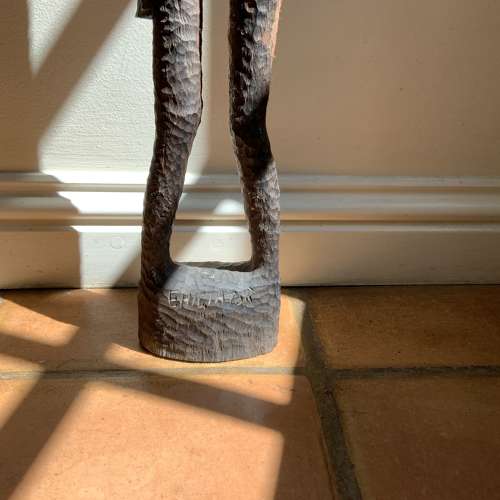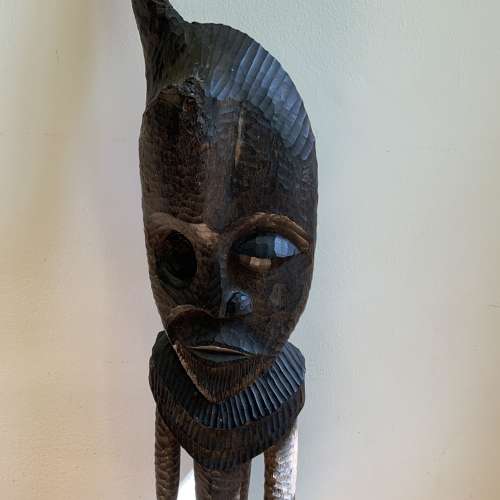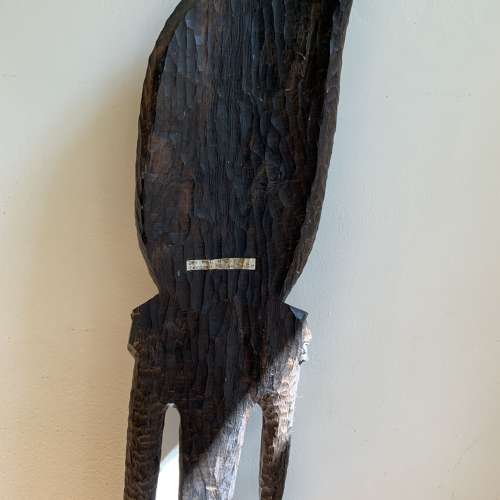
Code: 11009
Dimensions:
“Day and Night”
George Ugiagbe Ehigiator (Nigerian, 1920-1989)
Signed "Ehigiator" to base and titled etc on label verso
Direct carved sculptural totem
African Ironwood
Circa 1960's
Measures:-
119 cm high x 14.5 cm wide x 6.2 cm deep
A tall, carved hardwood sculpture, signed "EHIGIATOR" to the integral plinth, an old label to the back with writing in ink "Day and Night / Created by Ehigiator".
The sculptor George Ugiagbe Ehigiator worked in Lagos from the 1950's to 1970's. He was referred to by his son as the "Odiowere of Oguanogbe" (i.e. the leading elder of Ogungbe (in southwest Lagos)). The surname, which is not uncommon, translates as "Long life from God" and originates from the Esan (Ishan) ethnic group of southern Nigeria who reside in Esanland in Edo State. The name of the Esan (Ishan) peoples is derived from "esanfua" meaning "those who have fled": many from the Esan community can trace their ancestry back to people who left the kingdom of Benin to escape from injustice and repression.
This striking figure, carved from a dense and heavy hardwood, draws on several African, specifically Nigerian, artistic traditions. In the figure's elongated shape it is closely related to 'Mumuye' figures, from Nigeria's Benue River Valley region, whose elegant forms are associated with a range of functions: a single sculpture fulfills several diverse roles including the reinforcement of male elders' status and use by healers and diviners in arriving at diagnoses. Within the Esan tradition there are flat, figural post-like carvings which are referred to as "izemize" (meaning "human figure which cannot speak") and the artist may well have been calling these to mind. With its single horn jutting from its forehead, the figure also bears comparison to the Congolese androgynous 'Power Figures' (nkisi) of the Songye tribe, which are used as supernatural, protective guardian-figures to ward off evil and usher in wealth and fertility to a household.
As well as its obviously asymmetrical appearance, the artist's title for the piece, "Day and Night", further advances the idea that there is a duality to this figure: one eye is open the other is a closed, apparently sleeping, crater; there is devilish horn to the same side of the figure which also has no use for the arm on its 'sleeping'/'night' side and it is, therefore, represented as a tapering, withered limb. The figure sports various neck rings, symbolic of high status in various African traditions and it is, presumably, male as it is bearded. The sculpture is designed to be seen from the front, the back is flattened and intended to be placed against a wall. A piece by the same artist which is similarly titled has also been identified but this is of a very different appearance.
George Ehigiator was the father of the African-American clinician Dr Lucky Osarhiemen Ehigiator (1954-2016) who received his PhD from University of California, Berkeley and was former Professor of Public Health at California State University and Dean of the College of Health and Sciences at the William V. S. Tubman University in Harper, Maryland County, Liberia. Lucky Ehigiator at one time declared his intention to run for governor of Edo state on behalf of the All Nigerian People's Party (ANPP). The Dedication in Lucky Ehigiator's published thesis "The rural health model in Bendel State of Nigeria: Impact of community participation" (University of California, Berkeley, 1989) reads:
"Dedicated to my father Sculptor George Ugiagbe Ehigiator (1920-1989) The Odiowere of Oguanogbe"
In 1984 John West of Bonita Springs, Florida, U.S.A. presented a 1974 door panel triptych sculpture by George Ehigiator, which he had been given by the President of Nigeria, Olusegun Obasanjo, to Lee County, Florida. In 2006 this was loaned to The Lee County Black History Society, Fort Myers, Florida.
George Ehigiator does have a record in the National Museum of African Art Library at the Smithsonian in Washington, D.C. but no piece by him has yet been identified in Smithsonian's collection. It is hoped that this preliminary research here might prompt other scholars to flesh-out the biography of a talented African artist.


